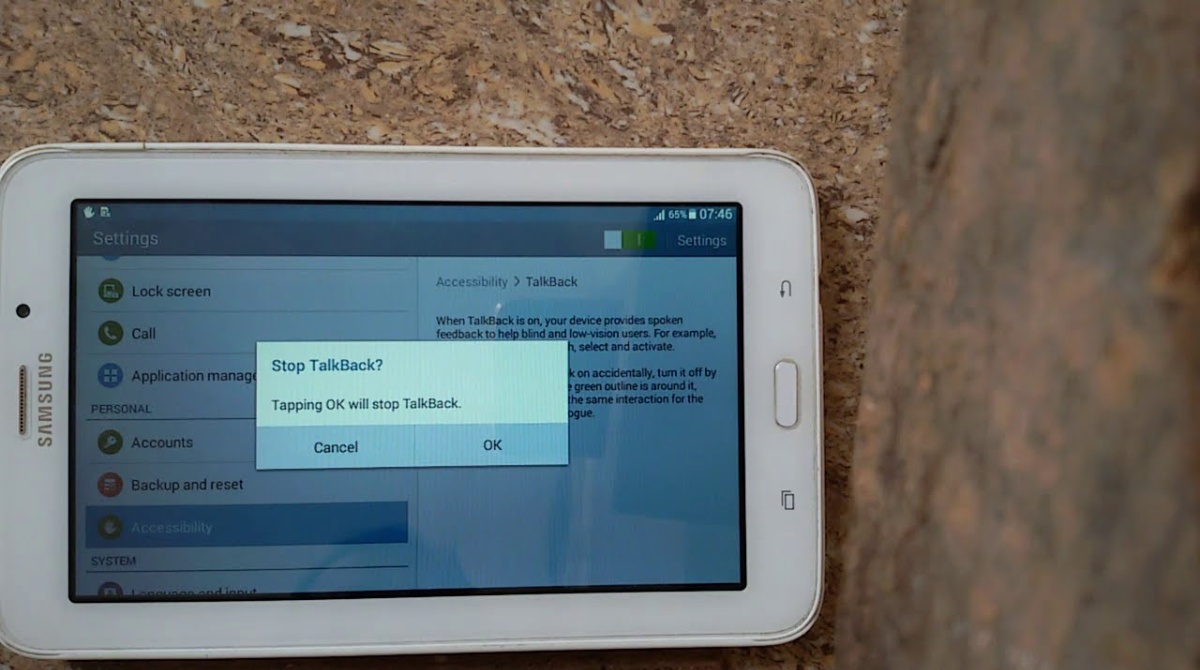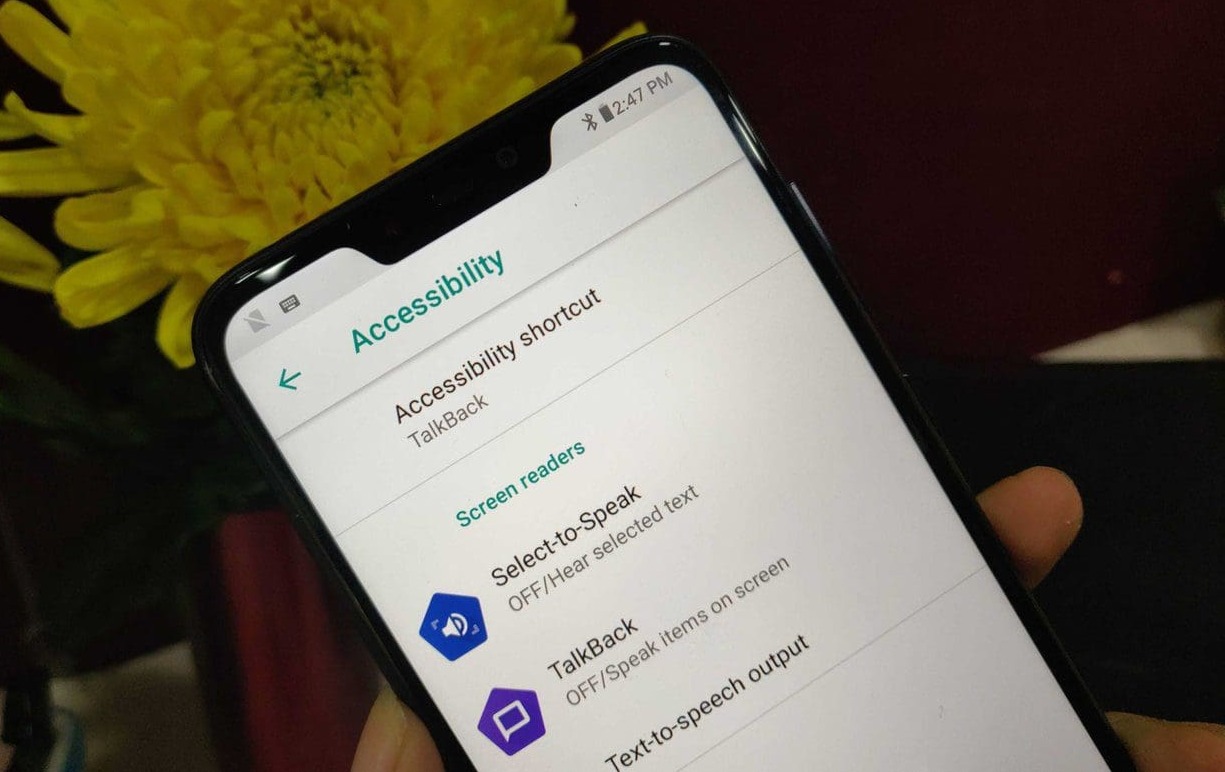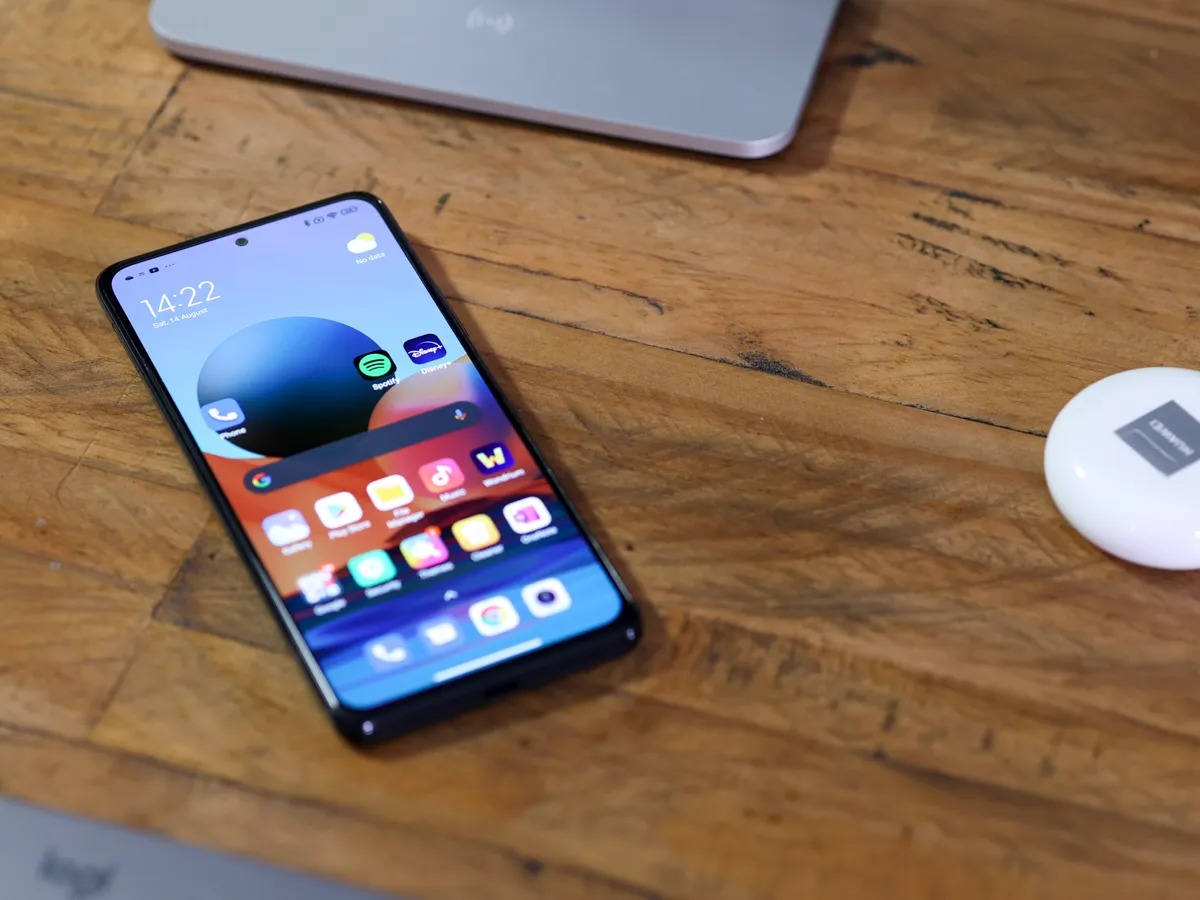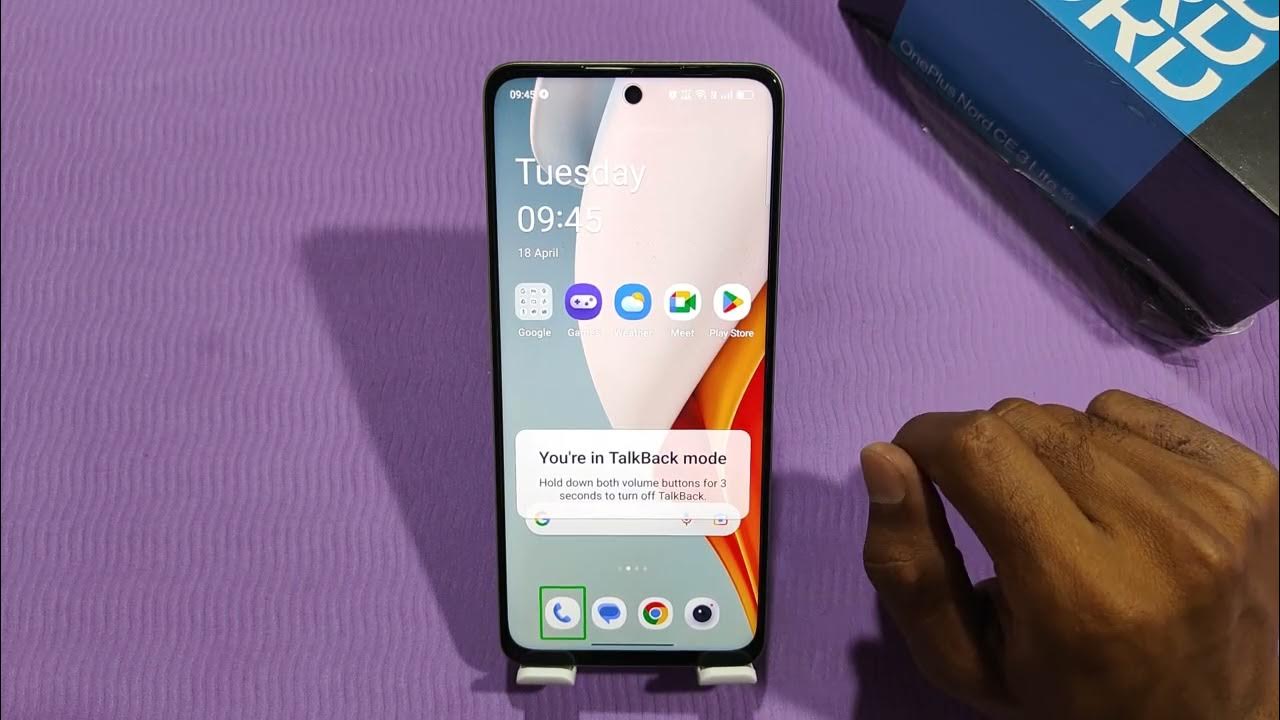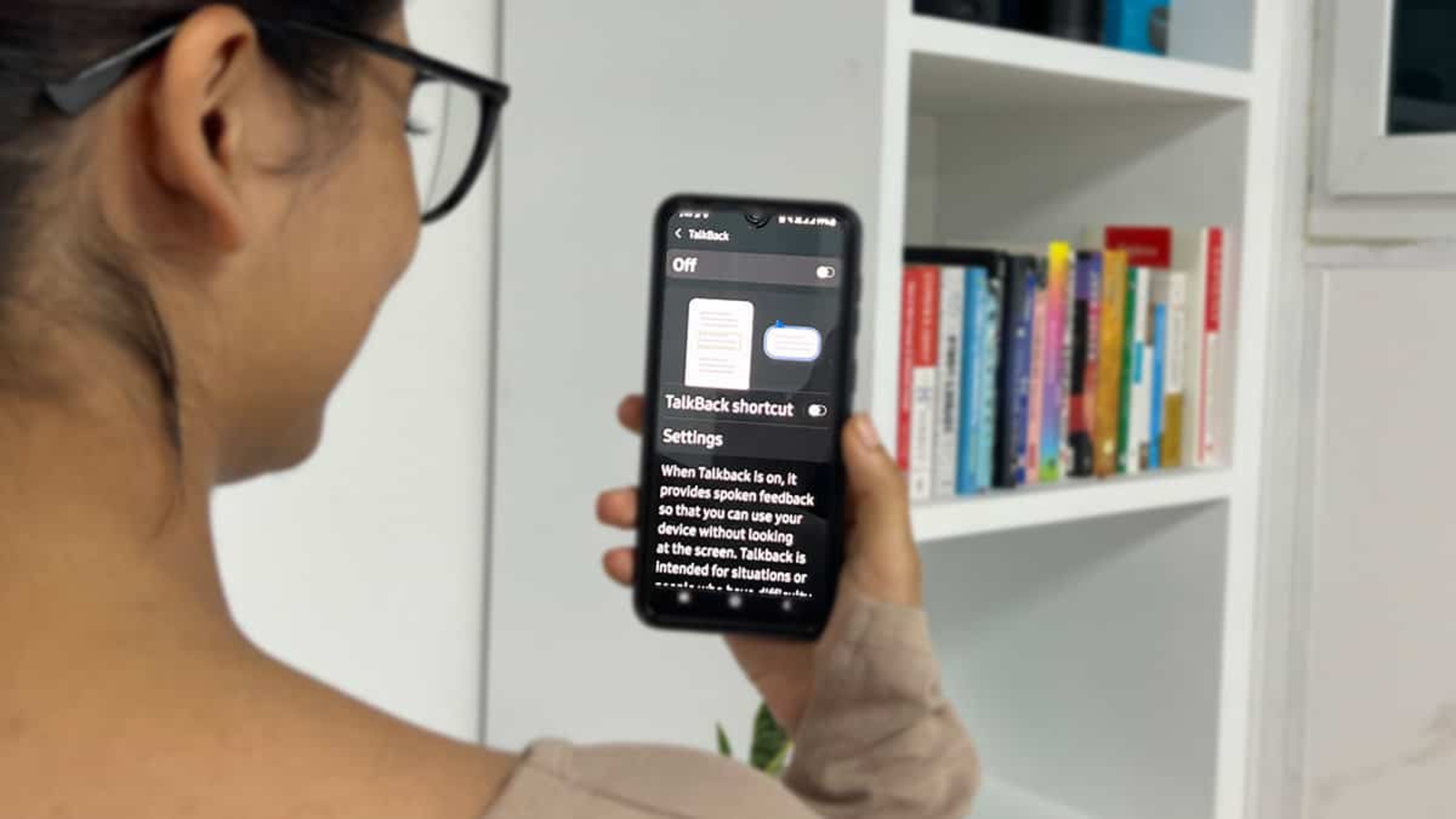Introduction
The Talkback feature on the Pixel 4 is a valuable accessibility tool designed to assist users with visual impairments in navigating their devices. However, for those who do not require this feature, it can inadvertently cause frustration and confusion due to its unique navigation and interaction methods. If you find yourself in this situation, you may be seeking a clear and concise guide to disable the Talkback feature on your Pixel 4.
In this comprehensive step-by-step guide, we will walk you through the process of turning off Talkback on your Pixel 4. By following these instructions, you can seamlessly deactivate this feature and regain control of your device's navigation and functionality. Whether you are a new Pixel 4 user or someone who has recently encountered the Talkback feature, this guide will provide you with the necessary steps to disable it and enhance your user experience.
By the end of this guide, you will have the knowledge and confidence to navigate through your Pixel 4's settings and accessibility options, allowing you to customize your device to suit your specific needs. Let's embark on this journey together and empower you to take full control of your Pixel 4's accessibility features.
Step 1: Accessing the Settings
Accessing the settings on your Pixel 4 is the initial step in the process of disabling the Talkback feature. The settings menu serves as the central hub for customizing various aspects of your device, including accessibility features. To access the settings, follow these simple steps:
-
Unlock Your Device: If your Pixel 4 is locked, unlock it using your preferred method, such as a PIN, pattern, or fingerprint.
-
Locate the Settings App: The settings app icon typically resembles a gear or cogwheel and is commonly found on the home screen or in the app drawer. Tap on the settings app icon to launch the settings menu.
-
Accessing Settings via Quick Settings: Alternatively, you can access the settings menu by swiping down from the top of the screen to open the notification shade. Then, tap on the gear icon in the top right corner to access the settings.
-
Navigate to the System Section: Once the settings menu is open, scroll through the options and locate the "System" section. This section contains essential device settings and features that are integral to the overall functionality of your Pixel 4.
-
Select the System Option: Tap on the "System" option to enter the system settings, where you will find a range of options related to device management, updates, and accessibility.
By following these steps, you will successfully access the settings on your Pixel 4, laying the groundwork for the subsequent steps in the process of disabling the Talkback feature. With the settings menu readily available, you are now prepared to navigate to the accessibility settings and proceed with the deactivation of Talkback, ultimately enhancing your device's usability and personalizing it to your preferences.
Step 2: Navigating to Accessibility
Once you have successfully accessed the settings on your Pixel 4, the next crucial step is to navigate to the accessibility settings. These settings are pivotal in customizing your device to accommodate various user needs, including visual, auditory, and motor impairments. By following the steps outlined below, you will seamlessly locate the accessibility settings and proceed with the process of disabling the Talkback feature.
-
Locate and Tap on Accessibility: Within the system settings menu, scroll through the options until you find the "Accessibility" tab. This tab is typically represented by an icon featuring a person in a wheelchair and is designed to centralize all accessibility-related features and adjustments. Once you have located the "Accessibility" tab, tap on it to enter the accessibility settings.
-
Explore Accessibility Options: Upon entering the accessibility settings, you will encounter a diverse range of options tailored to enhance the usability of your Pixel 4 for individuals with varying needs. These options may include screen readers, magnification gestures, color inversion, and more. Take a moment to familiarize yourself with the available accessibility features, as they are designed to empower users to personalize their devices according to their specific requirements.
-
Select Talkback: Within the accessibility settings, locate and tap on the "Talkback" option. Talkback is a prominent accessibility feature that provides spoken feedback to users, aiding them in navigating their devices. By selecting the Talkback option, you will gain access to its specific settings and controls, allowing you to proceed with the deactivation process.
By successfully navigating to the accessibility settings and selecting the Talkback option, you have laid the groundwork for the subsequent steps in the process of disabling this feature. The accessibility settings serve as a gateway to a myriad of customization options, enabling you to tailor your Pixel 4 to suit your unique preferences and accessibility needs. With the Talkback option within reach, you are now prepared to proceed with the deactivation process, ultimately enhancing your device's usability and ensuring a personalized user experience.
Step 3: Selecting Talkback
Upon entering the accessibility settings on your Pixel 4, the pivotal next step in the process of disabling the Talkback feature is to select the Talkback option. This step is crucial as it grants you access to the specific settings and controls associated with Talkback, allowing you to proceed with the deactivation process seamlessly.
When you select the Talkback option within the accessibility settings, you will be presented with a range of controls and configurations tailored to this feature. These controls enable users to customize the behavior and functionality of Talkback according to their specific needs and preferences. It's important to note that the Talkback settings may vary slightly depending on the device's software version and any recent updates. However, the fundamental process of deactivating Talkback remains consistent across these variations.
Upon selecting the Talkback option, you may encounter settings related to speech rate, pitch, verbosity, and other auditory feedback parameters. These settings allow users to fine-tune the spoken feedback provided by Talkback, ensuring that it aligns with their individual preferences and enhances the overall user experience.
In addition to speech-related settings, the Talkback menu may also include options for gesture controls, touch exploration, and keyboard shortcuts. These features are designed to facilitate intuitive navigation and interaction for users who rely on Talkback to operate their devices effectively.
As you navigate through the Talkback settings, take a moment to familiarize yourself with the available options and controls. Understanding the functionalities and customization capabilities of Talkback will empower you to make informed decisions as you proceed with the deactivation process.
By selecting the Talkback option within the accessibility settings, you have taken a significant step towards disabling this feature and regaining control of your device's navigation and interaction methods. The ability to access and customize Talkback settings underscores the user-centric design of accessibility features on the Pixel 4, ensuring that individuals with diverse needs can tailor their devices to suit their specific requirements.
With the Talkback option selected and its settings within reach, you are now prepared to proceed with the final steps in the process of turning off Talkback, ultimately enhancing your device's usability and personalizing it to your preferences.
Step 4: Turning Off Talkback
After navigating to the Talkback settings within the accessibility menu on your Pixel 4, the final and pivotal step in the process of disabling the Talkback feature is to turn it off. This straightforward yet essential action will deactivate Talkback, allowing you to regain control of your device's navigation and interaction without the spoken feedback provided by this accessibility feature.
To turn off Talkback on your Pixel 4, follow these simple steps:
-
Locate the Talkback Toggle: Within the Talkback settings, you will find a toggle or switch that enables you to turn the feature on or off. This toggle is typically positioned at the top of the Talkback settings screen, allowing for quick and convenient access to the activation and deactivation controls.
-
Disable Talkback: Tap on the Talkback toggle to switch it from the "on" position to the "off" position. This action effectively disables Talkback, ceasing the spoken feedback and auditory cues that accompany the feature's operation.
-
Confirm Deactivation: Upon toggling off Talkback, you may be prompted to confirm the deactivation of this feature. This confirmation dialog serves as a safeguard, ensuring that users are intentional in their decision to turn off Talkback. Follow the on-screen prompts to confirm the deactivation, if prompted.
By following these steps, you will successfully turn off Talkback on your Pixel 4, effectively disabling this accessibility feature and restoring standard navigation and interaction methods on your device.
Once Talkback is turned off, you will notice a significant difference in the way you interact with your Pixel 4. The absence of spoken feedback and auditory cues provided by Talkback allows for a more streamlined and personalized user experience, tailored to your specific preferences and accessibility needs.
With Talkback successfully disabled, you have completed the process of turning off this feature on your Pixel 4. By empowering users to customize their devices according to their individual requirements, Google has demonstrated a commitment to inclusivity and user-centric design, ensuring that all individuals can navigate and interact with their devices effectively.
By following this comprehensive step-by-step guide, you have gained the knowledge and confidence to disable the Talkback feature on your Pixel 4, enhancing your device's usability and personalizing it to suit your unique needs. Congratulations on successfully turning off Talkback and taking control of your Pixel 4's accessibility features.
Conclusion
In conclusion, the process of disabling the Talkback feature on your Pixel 4 is a significant step towards personalizing your device and enhancing its usability. By following the comprehensive step-by-step guide outlined in this article, you have gained valuable insights into navigating the settings, accessing accessibility options, and ultimately turning off Talkback to regain control of your device's navigation and interaction methods.
As you disable Talkback, you reclaim the freedom to interact with your Pixel 4 in a manner that aligns with your individual preferences and accessibility needs. The absence of spoken feedback and auditory cues provided by Talkback allows for a more streamlined and personalized user experience, empowering you to navigate your device with confidence and efficiency.
Furthermore, the accessibility settings on the Pixel 4 exemplify Google's commitment to inclusivity and user-centric design. By centralizing a diverse range of customization options tailored to accommodate various accessibility needs, Google ensures that individuals with diverse requirements can tailor their devices to suit their specific preferences.
As technology continues to evolve, the importance of accessibility features cannot be overstated. The ability to customize devices according to individual requirements fosters an inclusive digital environment where all users can engage with technology on their terms. By providing a clear and concise guide to disabling Talkback, this article aims to empower users to take full control of their devices and leverage accessibility features to enhance their overall user experience.
In the journey to personalize your Pixel 4 and optimize its accessibility features, the process of disabling Talkback serves as a pivotal milestone. It signifies your ability to navigate the settings, make informed decisions, and tailor your device to suit your unique needs. As you embark on this journey, remember that technology is a tool for empowerment, and by customizing your device, you are harnessing its full potential to enrich your daily interactions and experiences.
With Talkback successfully disabled, you have taken a significant step towards personalizing your Pixel 4 and ensuring that it aligns with your specific accessibility requirements. As you continue to explore the diverse features and customization options available on your device, remember that your ability to tailor technology to suit your needs is a testament to the inclusive and user-centric design principles that underpin modern digital experiences.
Congratulations on successfully disabling the Talkback feature on your Pixel 4, and may your journey towards a personalized and accessible user experience be filled with empowerment and seamless interactions.








